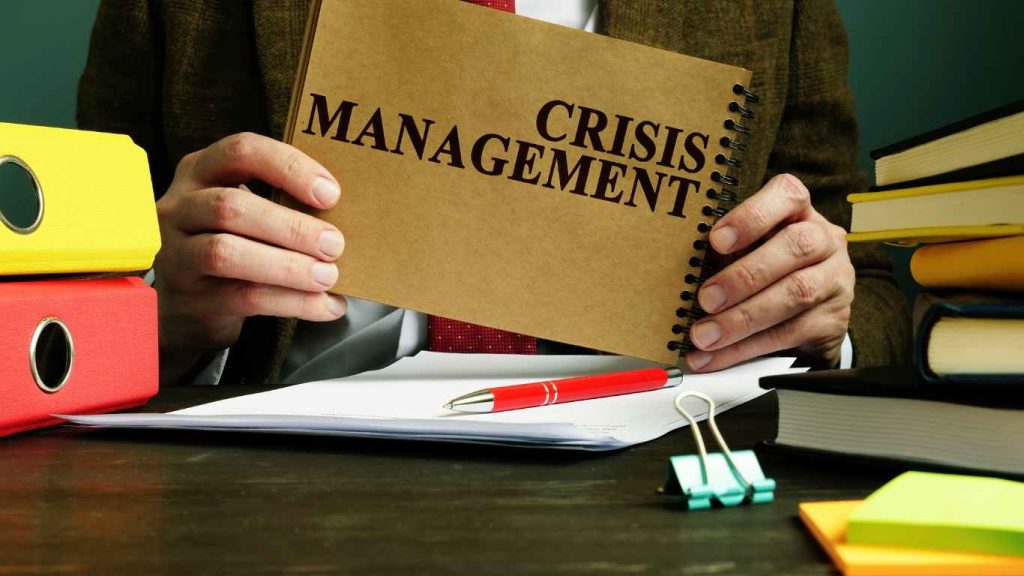You never know when your law firm can meet with an unexpected crisis. No matter what the size of your law firm, it is always vulnerable to a crisis. Crisis can take many forms in a law firm. It can disrupt your firm’s reputation, threaten your firm’s position in the industry, or do other such things.Regardless of the type of crisis your company may encounter, it’s essential to maintain a strong crisis management plan at all times. Having a good crisis management team and preparing an excellent response plan should be the priority of your firm.
We will explore more about law firm crisis management, best practices, and steps for implementing it in your law firm.
What Is Crisis Management?
Crisis management is simply planning and managing any unexpected situation. It helps in mitigating the impact of any unwanted event or situation that arises. These unexpected events can harm the reputation of your organization and stakeholders.
Good crisis management preparation includes identifying potential problems, risks, and creating strategies to address these issues. Crisis management also helps in implementing responses to minimize the damage and ensure a quick recovery.
The primary aim of crisis management is to protect the organization from potential threats. It should also save the reputation by addressing the challenges incurred during a crisis.
In the last few years, more and more firms are becoming inclined toward crisis management. According to White & Case preparation is the key to crisis management.
Steps For Implementing Crisis Management at a Law Firm
If your firm is planning to implement a crisis management plan, here are a few steps to do that:
Recognize the Issue
Firstly, you have to recognize the issue within your firm. Start conducting the research and identify the potential crisis scenario that can occur. Assess the possibility of a crisis that your firm can face from internal and external factors. This will help you in the crisis management preparation process. In this stage, you need a clear understanding of potential crises that can arise and the harm they can cause. In addition to that, you should also assess the stakeholders who might be affected by potential issues that can arise.

Ask questions like
- What potential issues can arise within the firm?
- What factors are influencing these issues?
- How can the crisis management team help?
- How will it affect the stakeholders?
Once you have answers to all these questions, you can move on to the next steps.
Restrict the damage
When any crisis occurs within the firm, it is crucial to take immediate action. This will help to restrict the damage. The motive here is to reduce the impact of the crisis and prevent it from escalating any further.
In this step, you need to isolate the issue that has taken place. The firm needs to quarantine affected systems or processes so that it doesn’t affect other areas of the firm.
Assign the duty of restricting the damage to the responsible team member. Establish clear communication and stay updated with the status.
Conduct crisis management team meeting and ask the following questions:
- How can we restrict the crisis?
- Who will be responsible for managing the crisis?
- How can we limit the damage?
- What immediate actions can we take?
Remove the Problem
Now that you are aware of the problem and know how you can limit its impact. It is time to remove the problem. Addressing the root cause of the issue is crucial to prevent it from taking place in the future.
For instance, your firm is facing an issue of data breach. You have to assess your data security measures. Immediately close the security breach and implement necessary law firm cybersecurity measures to prevent this situation from arising in the future.
Here you can ask questions like:
- How did this situation occur?
- What is the first step you can take to remove the problem?
- Who is responsible for the issue?
- How to stop this situation from happening again?
Recover from the Incident
Now that we have resolved the problem, the next question is how to recover from the incident. Develop a strong and comprehensive recovery plan for quick recovery. This plan should consist of all the necessary steps that the firm has to follow. This plan will bring the firm to a normal situation. Communicate with your clients, stakeholders, and other members affected by the situation and try to gain their confidence again. To recover from the incident, address any legal issues or compliance that may have arisen.
- Here you need to ask questions like:
- Can we recover from the incident?
- How fast can we recover from the incident?
- What necessary steps does the firm need to take?
Resolve the Problem
After you have successfully managed the crisis, it is time to resolve the problem from the root. You can’t leave the problem unaddressed if the situation is under control. Your firm needs to implement a long-term solution to the problem.
Analyze and see where your firm is lagging behind. Additionally, see what process you need to change or improve so the same situation doesn’t arise again.

You should have an answer to questions like:
- What is the long-term solution for this?
- How can you stop this from happening again?
- How will you communicate with the team about it?
Refine Your Law Firm Crisis Response Plan
It is important to keep updating your law firm’s crisis response plan. Regularly review it according to the crisis that you have faced in the past. Your response plan should be strong enough to manage all the issues.
Make sure to conduct a post-crisis analysis to see what solution or strategy has worked for you and what is not. Train your crisis team to ensure proper implementation of your crisis response plan.
Crisis Management Best Practices
Here are some of the best practices for crisis management:
- When it comes to crisis management preparation, advance preparation is the key. Your firm needs to be prepared for all sorts of circumstances that may occur. A proper management plan should be there.
- In a crisis situation, take quick action. Analyze the situation, activate your crisis management team, and take the necessary actions as soon as possible.
- Transparent communication goes a long way. So make sure to communicate with your team, internal and external stakeholders, and other responsible parties.
- Implement permanent and long-term solutions for the crises that occur. Find the root cause of it.
- Update and review your crisis management policy. Conduct regular crisis simulations to limit the chances of crises.

The Bottom Line
High stake situations can severely impact your law firm. Having a crisis management plan in place can help in managing these situations. Whether you are facing a security breach or a public relations crisis. Having a plan will minimize the consequences and ensure the swift recovery of your law firm. You can follow the above mentioned steps and strategies for successful crisis management.

